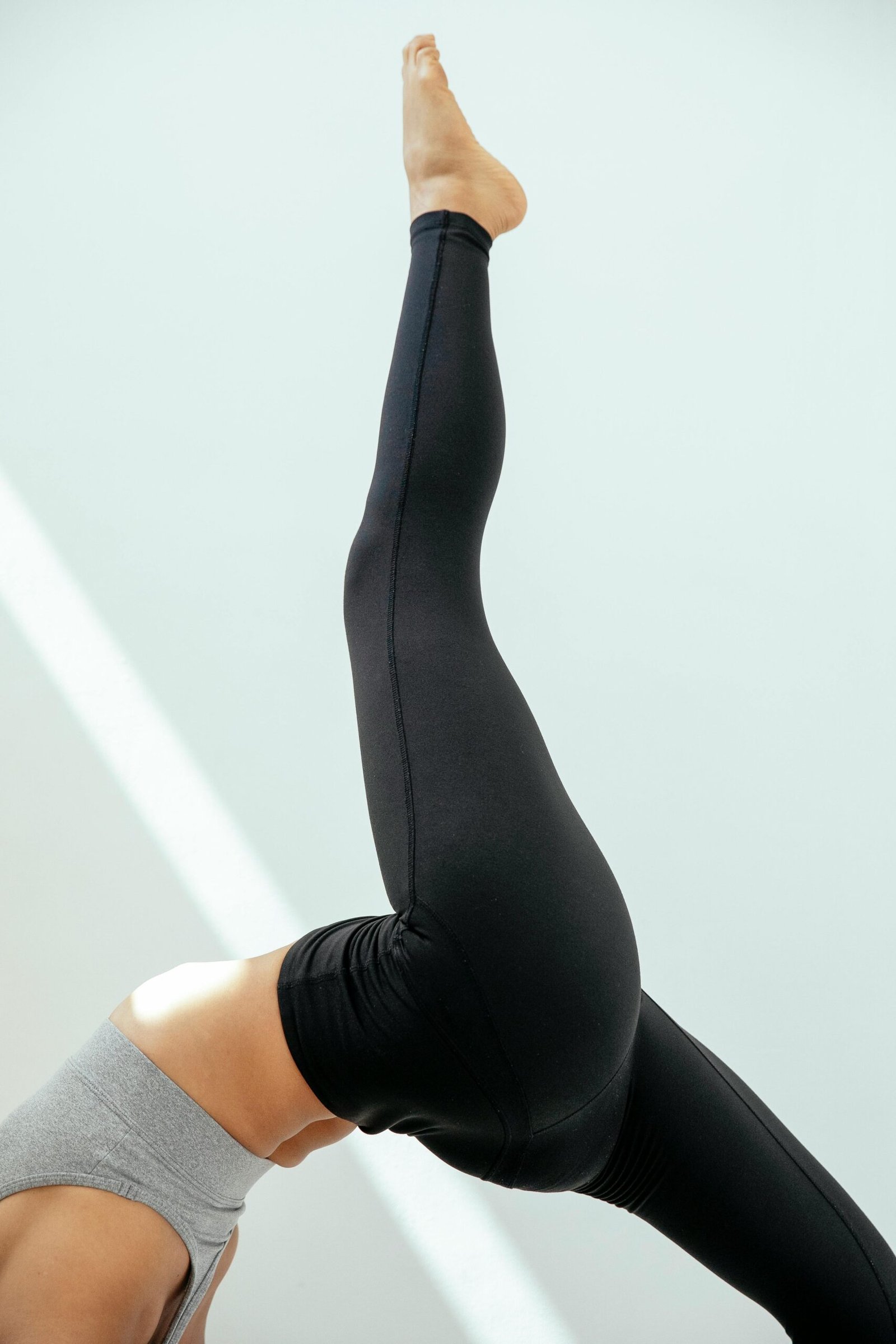Are you looking to take your fitness to the next level? High-Intensity Interval Training (HIIT) workouts might be just what you need. HIIT workouts are a form of exercise that involves short bursts of intense activity followed by brief periods of rest or low-intensity exercise. This method has gained popularity in recent years due to its effectiveness in building cardiovascular endurance, burning calories, and improving overall fitness. Whether you’re a beginner or a seasoned athlete, incorporating HIIT workouts into your routine can help you achieve your fitness goals in a fun and efficient way. So, get ready to sweat and reap the benefits of HIIT training!

This image is property of pixabay.com.
What is High-Intensity Interval Training (HIIT)?
Definition of HIIT
High-Intensity Interval Training (HIIT) is a workout approach that involves alternating between intense bursts of exercise and short recovery periods. During the high-intensity intervals, you push yourself to your limit, challenging your cardiovascular and muscular systems. HIIT is known for its efficiency and time-saving benefits, making it a popular choice for individuals looking to maximize their workout in a shorter amount of time.
Benefits of HIIT
The benefits of HIIT go beyond just saving time. This type of training has been proven to increase cardiovascular fitness, burn calories, promote fat loss, improve insulin sensitivity, enhance endurance and performance, and even promote brain function. Additionally, HIIT workouts can be done anywhere, making them accessible to individuals who prefer to exercise at home, outdoors, or in a gym.
Science behind HIIT
The science behind HIIT lies in the concept of exerting maximum effort during the high-intensity intervals. By pushing your body to the limit, you activate various physiological responses that lead to improvements in aerobic and anaerobic fitness. HIIT has been found to increase metabolism, reduce blood pressure, improve cholesterol levels, boost brain function, promote muscle growth, and reduce abdominal and visceral fat.
How to Get Started with HIIT Workouts
Consult with a healthcare professional
Before starting any new exercise regimen, it’s essential to consult with a healthcare professional or a qualified fitness expert. They can assess your current fitness level, discuss any existing health conditions or concerns, and provide personalized recommendations to ensure your safety and efficacy while engaging in HIIT workouts.
Choose the right exercise
The beauty of HIIT is its versatility in terms of exercise selection. You can choose from a wide range of activities, such as running, cycling, jumping rope, bodyweight exercises, or even swimming. The key is to select an exercise that you enjoy and that challenges you physically. This will help you stay motivated and consistent with your workouts.
Warm up properly
Before diving into the high-intensity intervals, it’s crucial to warm up your body to prepare it for the intense workout ahead. Spend at least 5-10 minutes engaging in light cardio activities such as jogging, marching in place, or dynamic stretches to increase your heart rate and loosen up your muscles. Warming up properly helps prevent injuries and allows for better performance during the workout.
Set your intervals and rest periods
The intervals are the cornerstone of any HIIT workout. They consist of alternating between high-intensity exercise and lower-intensity recovery periods. A common approach is to perform a 1:1 ratio, meaning you spend an equal amount of time on high-intensity and low-intensity efforts. For example, you could do 30 seconds of intense activity followed by 30 seconds of rest. Experiment with different interval lengths to find what works best for your fitness level and goals.
Begin with shorter intervals and increase gradually
If you’re new to HIIT workouts, it’s essential to start with shorter intervals and gradually increase the duration as your fitness improves. Starting with longer intervals right away may lead to overexertion and increased risk of injury. Begin with intervals that challenge you without pushing you to the point of exhaustion. As you build strength and endurance, gradually increase the duration of your intervals to continue challenging your body.
Monitor your heart rate
Monitoring your heart rate during HIIT workouts can provide valuable insights into your intensity level and help you adjust accordingly. You can measure your heart rate manually by counting your pulse or using wearable fitness trackers. Pay attention to how your heart rate responds during the high-intensity intervals and ensure that it returns to a comfortable level during the rest periods.
Cool down and stretch
After completing a HIIT workout, it’s crucial to allow your body to cool down gradually. Spend 5-10 minutes engaging in low-intensity exercises, such as walking or gentle stretching, to bring your heart rate back to its resting state. Stretching during the cooldown phase can help improve flexibility and reduce post-workout muscle soreness. Make sure to focus on stretching the muscles that were specifically targeted during your HIIT workout.

This image is property of pixabay.com.
Different Types of HIIT Workouts
Tabata
Tabata is a popular form of HIIT that follows a specific timing pattern. It consists of 20 seconds of all-out effort followed by 10 seconds of rest, repeated for a total of four minutes. This high-intensity protocol is incredibly time-efficient and allows for maximum effort during the work intervals.
The Little Method
The Little Method is a HIIT workout developed by Dr. Martin Gibala. It involves 60 seconds of intense exercise followed by 75 seconds of rest, repeated for a total of 12 minutes. This method is known for its effectiveness in improving cardiovascular fitness and is suitable for individuals who may not be able to sustain the high intensity required by other HIIT workouts.
10-20-30 Training
10-20-30 Training is a HIIT workout approach that focuses on alternating between three different intensity levels. It involves 30 seconds of low-intensity exercise, followed by 20 seconds of moderate intensity, and finally 10 seconds of maximum effort. This type of workout can be adapted to various exercises, making it versatile and engaging.
Circuit Training
Circuit Training blends strength training exercises with cardiovascular movements, creating a comprehensive full-body workout. It involves performing a series of exercises with little to no rest in between, targeting different muscle groups. This type of HIIT workout not only improves cardiovascular fitness but also helps build strength and muscular endurance.
Sprint Interval Training
Sprint Interval Training (SIT) is a form of HIIT that involves short bursts of all-out sprinting followed by longer recovery periods. It focuses on maximizing cardiovascular performance and can be done on a variety of platforms, such as running, cycling, or using cardio machines. SIT is a challenging but effective way to boost both aerobic and anaerobic fitness.
Benefits of HIIT Workouts
Efficient and time-saving
One of the key benefits of HIIT workouts is their efficiency and time-saving nature. By alternating between intense exercise and short recovery periods, you can achieve significant results in a fraction of the time compared to traditional cardio workouts. HIIT is perfect for individuals who have busy schedules but still want to prioritize their fitness.
Increases cardiovascular fitness
HIIT workouts are highly effective in improving cardiovascular fitness. The intense bursts of exercise followed by recovery periods challenge your heart and lungs, leading to increased oxygen uptake, improved endurance, and enhanced cardiovascular health. Regular participation in HIIT workouts can reduce the risk of cardiovascular diseases.
Burns calories and promotes fat loss
If your goal is to burn calories and shed excess fat, HIIT workouts are an excellent choice. The high-intensity intervals activate your metabolism, causing your body to continue burning calories even after the workout is over. This effect, known as the afterburn effect or excess post-exercise oxygen consumption (EPOC), can lead to increased fat loss and improved body composition.
Improves insulin sensitivity
Insulin sensitivity refers to how effectively your body uses glucose for energy. Poor insulin sensitivity is associated with various health issues, including type 2 diabetes. HIIT workouts have been shown to improve insulin sensitivity, allowing your body to use insulin more efficiently and regulate blood sugar levels effectively.
Enhances endurance and performance
HIIT workouts are not only beneficial for cardiovascular fitness but also for improving endurance and overall athletic performance. By pushing your body to its limits during the high-intensity intervals, you train your muscles and energy systems to perform at higher intensities for longer durations.
Can be done anywhere
One of the great things about HIIT workouts is that they can be done anywhere, anytime. From bodyweight exercises at home to sprints in the park or cycling on a stationary bike in a gym, you have the flexibility to choose the setting that suits you best. HIIT eliminates the need for specialized equipment, making it accessible to individuals with various fitness levels and preferences.

This image is property of pixabay.com.
Effects of HIIT on the Body
Increases metabolism
HIIT workouts have been found to increase metabolism, which is the rate at which your body burns calories at rest. The intense exercise and EPOC effect keep your metabolic rate elevated even after you’ve finished working out. This can lead to increased calorie burn throughout the day and potentially aid in weight management.
Reduces blood pressure
Regular participation in HIIT workouts has shown promising results in reducing blood pressure levels. The intense intervals and subsequent recovery periods help strengthen your heart and improve the flexibility and function of your blood vessels. As a result, blood pressure levels decrease, reducing the risk of hypertension and related cardiovascular diseases.
Improves cholesterol levels
HIIT workouts have been associated with improvements in cholesterol profiles. Regular participation in HIIT can increase HDL (good) cholesterol levels while decreasing LDL (bad) cholesterol levels. This shift in cholesterol balance is beneficial for cardiovascular health and can help reduce the risk of heart disease and stroke.
Boosts brain function
Engaging in HIIT workouts can have positive effects on brain function and cognitive performance. The increased blood flow and oxygen supply during intense exercise stimulate the release of various chemicals in the brain that enhance mood, focus, and memory. Regular HIIT workouts have been associated with improved mental clarity and overall brain health.
Promotes muscle growth
Contrary to popular belief, HIIT workouts can also promote muscle growth and strength. The intense bursts of exercise not only burn calories but also challenge your muscles, leading to micro-tears and subsequent repair and growth. Incorporating resistance exercises into your HIIT routine can further enhance muscle development.
Reduces abdominal and visceral fat
One of the most sought-after benefits of HIIT workouts is its ability to target and reduce abdominal and visceral fat. The high-intensity intervals and metabolic effects of HIIT have been found to be particularly effective in reducing fat stores in the abdominal area. This visceral fat reduction has profound impacts on overall health and reduces the risk of obesity-related diseases.
Safety Considerations for HIIT Workouts
Start with a fitness baseline
Before embarking on HIIT workouts, it’s important to have a baseline understanding of your fitness level. This ensures that you choose appropriate exercises and intensities for your abilities. A fitness assessment performed by a qualified professional can help determine your starting point and guide your progress.
Avoid overexertion and listen to your body
While pushing yourself during HIIT workouts is essential for optimal results, it’s important to avoid overexertion. Pushing beyond your limits can increase the risk of injury and burnout. Listen to your body and give yourself permission to modify or reduce the intensity if necessary. Gradual progression is key to staying safe and enjoying long-term success with HIIT.
Use proper form and technique
Maintaining proper form and technique during exercises is crucial for injury prevention and optimal results. Before diving into HIIT workouts, familiarize yourself with proper form for each exercise you plan to include. If you’re uncertain, seek guidance from a qualified fitness professional who can teach you the correct technique and help ensure safety.
Be mindful of existing health conditions
If you have pre-existing health conditions such as cardiovascular diseases, musculoskeletal issues, or metabolic disorders, it’s important to be mindful and seek guidance from a healthcare professional before engaging in HIIT workouts. They can provide tailored recommendations and modifications to ensure that you exercise safely and effectively.
Choose appropriate rest and recovery periods
Rest and recovery are just as important as the high-intensity intervals in HIIT workouts. Be mindful of choosing appropriate rest periods to allow your body to recover fully and reduce the risk of overtraining. The duration of rest periods may vary depending on your fitness level, exercise intensity, and goals.
Stay hydrated
Proper hydration is crucial for any workout, including HIIT. Make sure to drink water before, during, and after your workouts to maintain adequate fluid balance. Dehydration can lead to decreased performance, increased risk of injury, and other complications. Listen to your body and drink water as needed throughout your workout.
Build a balanced workout routine
While HIIT workouts offer numerous benefits, it’s important to maintain a balanced exercise routine. Incorporate other forms of exercise, such as strength training, flexibility exercises, and steady-state cardio, to ensure overall fitness and prevent overuse injuries. Find a balance that works for you and your goals, and don’t neglect other aspects of fitness.

This image is property of images.pexels.com.
HIIT vs. Traditional Cardio Workouts
Different intensity levels
One of the key differences between HIIT and traditional cardio workouts lies in the intensity levels. Traditional cardio workouts usually involve a consistent and moderate intensity sustained for a longer duration, such as jogging or cycling at a steady pace. In contrast, HIIT workouts involve alternating between high-intensity bursts and recovery periods, pushing your limits during the high-intensity intervals.
Time efficiency
HIIT workouts are known for their time-saving benefits. Due to the high-intensity nature of the intervals, HIIT sessions are typically shorter in duration compared to traditional cardio workouts. This makes HIIT a popular choice for individuals with busy schedules who still want to achieve significant fitness and cardiovascular improvements.
Metabolic effects
HIIT workouts are known to have a profound impact on the metabolic system. The intense bursts of exercise and subsequent recovery periods increase the metabolic rate, leading to increased calorie burn during and after the workout. Traditional cardio workouts, while still burning calories, may not stimulate the metabolism to the same extent as HIIT.
Variety and flexibility
While traditional cardio workouts often involve repetitive motions such as running or cycling, HIIT allows for more variety and flexibility in exercise selection. You can choose from a wide range of activities and modify the intervals based on your preferences and goals. This variety keeps workouts engaging and prevents boredom.
Effectiveness for fat loss
Both HIIT and traditional cardio workouts can contribute to fat loss when performed consistently. However, HIIT has been shown to be particularly effective in reducing abdominal and visceral fat, which is associated with an increased risk of various health conditions. The metabolic effects and increased calorie burn during and after HIIT contribute to its effectiveness for fat loss.
Creating an Effective HIIT Workout Plan
Set specific goals
When creating an effective HIIT workout plan, it’s important to set specific goals. Whether it’s improving cardiovascular fitness, burning fat, increasing endurance, or building strength, clearly defining your objectives helps guide the intensity, duration, and exercise selection for your workouts.
Choose a variety of exercises
To keep your HIIT workouts engaging and challenge different muscle groups, incorporate a variety of exercises into your routine. This can include cardio exercises like running or cycling, bodyweight exercises such as push-ups and squats, or even using equipment like kettlebells or resistance bands. Switching up exercises not only prevents boredom but also helps to target different muscles and energy systems.
Determine work-to-rest ratios
The work-to-rest ratios that you choose for your HIIT workouts will depend on your fitness level, goals, and preferences. Experiment with different ratios, such as 1:1, 2:1, or even 3:1, to find what works best for you. Remember to consider your recovery and cardiovascular fitness levels when determining the appropriate rest periods.
Incorporate progressive overload
Progressive overload is a fundamental principle of exercise that involves gradually increasing the demands placed on your body over time. To continue seeing improvements in fitness, gradually increase the intensity, duration, or complexity of your HIIT workouts. This can be done by increasing the speed, resistance, or weight, or by introducing more challenging exercises.
Include recovery days
Recovery is a crucial part of any workout plan to allow your muscles to repair and grow. Make sure to schedule dedicated recovery days in your HIIT workout plan to prevent overtraining and reduce the risk of injuries. This can include active recovery activities such as light stretching, yoga, or low-intensity cardio.
Track your progress
Tracking your progress is essential to stay motivated and gauge your improvements over time. Keep a workout journal or use a fitness tracking app to record details such as exercise duration, intensity, repetitions, and perceived exertion. This allows you to track your progress and make adjustments to your HIIT workout plan as needed.

This image is property of images.pexels.com.
Tips to Maximize Your HIIT Training
Push yourself but avoid overtraining
Pushing yourself during HIIT workouts is crucial to elicit physiological adaptations and see improvements. However, it’s equally important to avoid overtraining. Overtraining can lead to decreased performance, increased injury risk, and burnout. Listen to your body, incorporate rest and recovery days, and be mindful of balancing intensity and volume.
Mix up exercises and intervals
To maximize the benefits of HIIT training, continuously challenge yourself by mixing up exercises and intervals. Try different combinations of exercises, modify the duration and intensity of intervals, and experiment with different work-to-rest ratios. This variety keeps your body guessing and prevents plateaus.
Engage in active recovery
Active recovery refers to low-intensity activities performed on rest or recovery days. Engaging in active recovery can help reduce muscle soreness, promote blood circulation, and aid in the recovery process. Activities like gentle walks, light stretching, or yoga can be incorporated into your HIIT training plan to enhance overall recovery.
Use proper nutrition and hydration
Proper nutrition and hydration are crucial for supporting your HIIT workouts and promoting optimal performance and recovery. Fuel your body with balanced meals that include sufficient protein, carbohydrates, and healthy fats. Hydrate adequately before, during, and after your workouts to maintain fluid balance and prevent dehydration. Consult with a registered dietitian for personalized nutritional guidance.
Get adequate rest and sleep
Rest and sleep are essential components of any training program. Aim for 7-9 hours of quality sleep per night to support recovery, hormonal balance, and overall well-being. Prioritize rest days and listen to your body’s signals for fatigue or excessive tiredness. Proper rest and sleep optimize your body’s ability to adapt to the stresses of HIIT training.
Stay consistent and motivated
Consistency is key when it comes to HIIT training. Make it a habit to incorporate regular workouts into your routine, whether it’s a few times a week or every day. Set realistic goals and remind yourself of your reasons for starting. Find motivation through accountability partners, workout groups, or by tracking your progress to stay committed to your HIIT training journey.
Listen to your body
Your body is an excellent guide when it comes to HIIT training. Pay attention to how you feel during and after each workout. If you experience extreme pain, dizziness, or any other concerning symptoms, stop the workout and seek appropriate medical attention if needed. Always prioritize your safety and well-being above pushing yourself too hard.
HIIT Workouts for Different Fitness Levels
Beginner HIIT workouts
For beginners, it’s important to start with lower-intensity exercises and shorter intervals. Begin with a 1:2 work-to-rest ratio, performing high-intensity exercises for 15 seconds followed by 30 seconds of rest. Choose exercises that focus on bodyweight movements such as jumping jacks, squats, or modified versions of high-intensity exercises.
Intermediate HIIT workouts
Intermediate level HIIT workouts can involve more challenging exercises and longer intervals. Aim for a 1:1 work-to-rest ratio, performing high-intensity exercises for 30 seconds followed by 30 seconds of rest. This allows for increased intensity and longer duration, challenging your cardiovascular fitness and muscular endurance.
Advanced HIIT workouts
Advanced HIIT workouts are designed for individuals with a high level of fitness and experience. Push yourself with a 2:1 or even a 3:1 work-to-rest ratio, performing high-intensity exercises for 40-60 seconds followed by 20-30 seconds rest. Incorporate complex exercises, add resistance, or increase the intensity to challenge your limits and take your fitness to new heights.
In conclusion, High-Intensity Interval Training (HIIT) offers a time-efficient and effective way to boost your fitness, burn calories, and improve overall cardiovascular health. By incorporating HIIT workouts into your exercise routine and following the tips and guidelines provided, you can maximize the benefits of this popular training method. Whether you’re a beginner or an advanced fitness enthusiast, HIIT can be modified to suit your individual needs and fitness levels. So lace up your sneakers, choose an HIIT workout that suits your preferences, and get ready to challenge yourself in a fun and efficient way.
